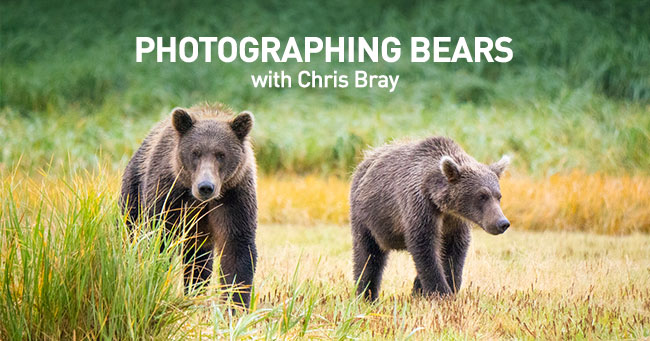
You can probably imagine my excitement when, as a wildlife photographer and LUMIX Global Ambassador deprived of international travel for so long, I finally arrived in Alaska in August, negative covid test in one hand and a brand new LUMIX GH6 in the other! It was the perfect opportunity to get back into the swing of things ahead of my next photo tour in Antarctica for the ultimate white Christmas, but more on that later. For the next two weeks, I was a kid in a candy store, my 8 equally-excited photo tour guests and I literally surrounded by puffins, sea otters, eagles, orca, whales, glaciers and my favourite – bears catching salmon!
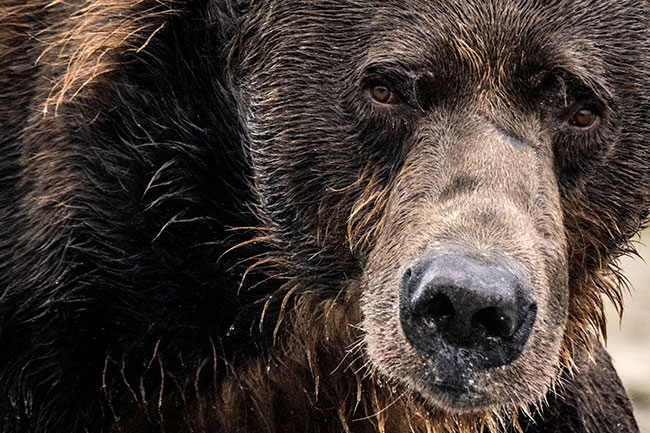
Just like sharks, bears have a bit of a PR problem. They aren’t (of course) the mindless killing machines many people assume them to be. So long as you’re alert, you don’t startle them or do anything stupid (like get between a sow and her cub, or bring food with you), and you know how to read their signs and body language and behave accordingly, bears much prefer to leave people alone. In one very special, remote location the bears have become accustomed to the occasional small group of well-trained photographers sitting out in the open, and actually ignore us entirely.
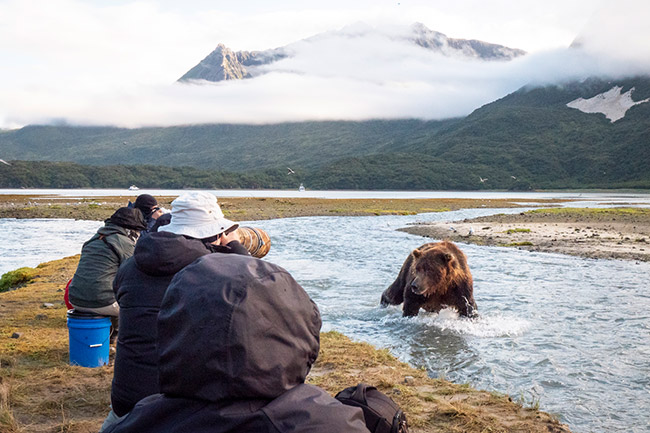
So unique and safe has this location proven to be over the last few decades that the National Parks Service has an exemption to the usual rule that people must stay 50m away from bears feeding on a concentrated food source (salmon). Here, if a group of photographers are quiet and patient enough to earn a bear’s trust, even huge boars will sometimes of their own volition wander right past within a couple of meters, just going about their business of eating, playing, sleeping – and pouncing on salmon. As always, my group was very well behaved, and we were rewarded with many unforgettable experiences.
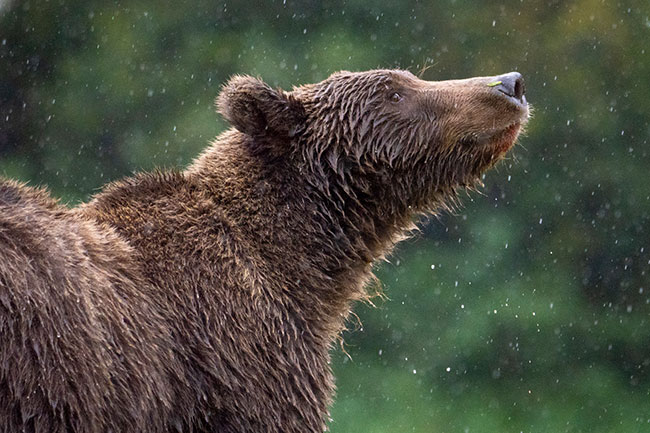
Bears have an incredible sense of smell. They are constantly sniffing, even standing up on their hind legs to catch a whiff of some distant scent. Amazingly, they can even smell the salmon in the river as they slowly trudge upstream, and having spotted one, they suddenly tear off after it with an explosive burst of speed, sending the water (and salmon).

We needed at least 1/2000th second shutter speed to freeze this action, which really pushed up our ISO when it was overcast, but thanks to its dual gain circuitry on the new (larger) 25 megapixel sensor (compared to the GH5), I was super happy with the minimal ISO noise generated. In addition to photos, filming the chase in super slow motion at 300 FPS made for pretty epic viewing too!
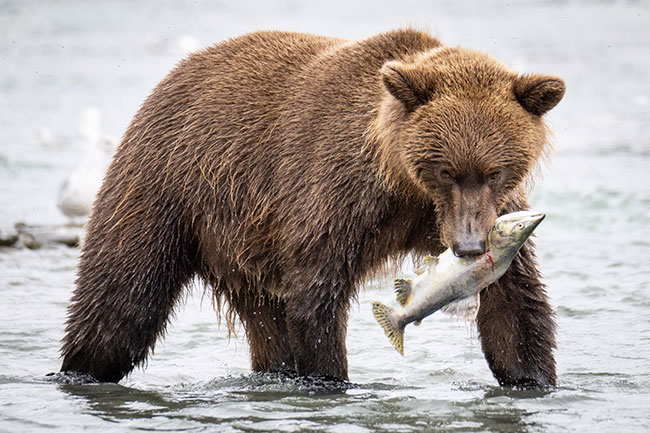
When they finally catch a salmon, some eat it right there standing in the stream. They know if they’ve caught a female with eggs, and they’ll carry it up onto the nearest riverbank (sometimes right beside us) where they can lap up every single tasty ball of caviar. Less dominant bears tend to walk (or run) away with their catch before a more senior bear spots it and decides to come over and steal it. It’s all action!
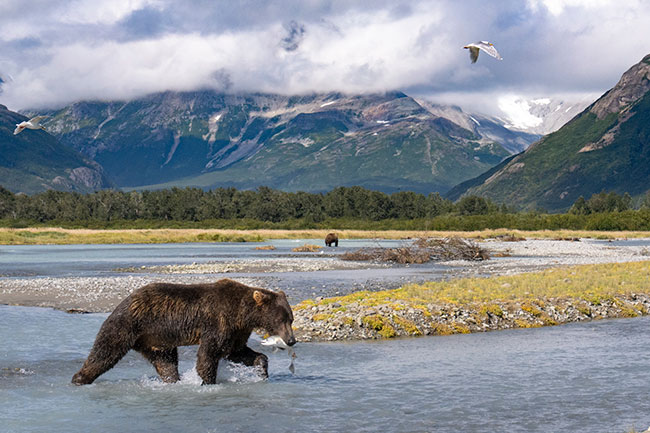
While I still mostly used my trusty LUMIX Leica 100-400mm super telephoto lens (200-800mm effective!), the background landscapes were so pretty (and the bears sometimes so close) that I often found myself using my wider LUMIX Vario 14-140mm or even my LUMIX Leica 8-18mm. A decade ago, when I first started coming here with a big heavy full-frame DSLR, I needed a tripod to hold my camera up, but now, with a micro four thirds mirrorless, I’m still loving the freedom and adaptability of hand holding all day in situations like this. I even did a lot of my best shooting with the camera held right down at ground level for an impressive perspective, all composed on the fold-out screen.

Of course, there were a lot more than just bears to photograph, sea otters being another favourite. I haven’t had time to go through all my photos yet however, as I’m busy prepping for an even more amazing photography tour I’m organising. A fly-in, fly-out Antarctica tour over Christmas and New Year’s Eve this year! I’ve been to Antarctica several times, but always onboard a larger ship with at least 50 other people and a pretty inflexible itinerary, and wasted days being seasick on the way down and back! This time, I’ve chartered a private jet to fly across the dreaded Drakes Passage down to an exclusive little 11-guest expedition ship waiting down there, so we can spend two full weeks exploring and photographing at our leisure. I’m an accredited IAATO Expedition Guide, so it can just be us onshore, for as long as we want. I’m so excited! If you’d like to grab your LUMIX camera and come on an unforgettable adventure with me, check out my page for the info.
Details: https://chrisbrayphotography.com/tours/
